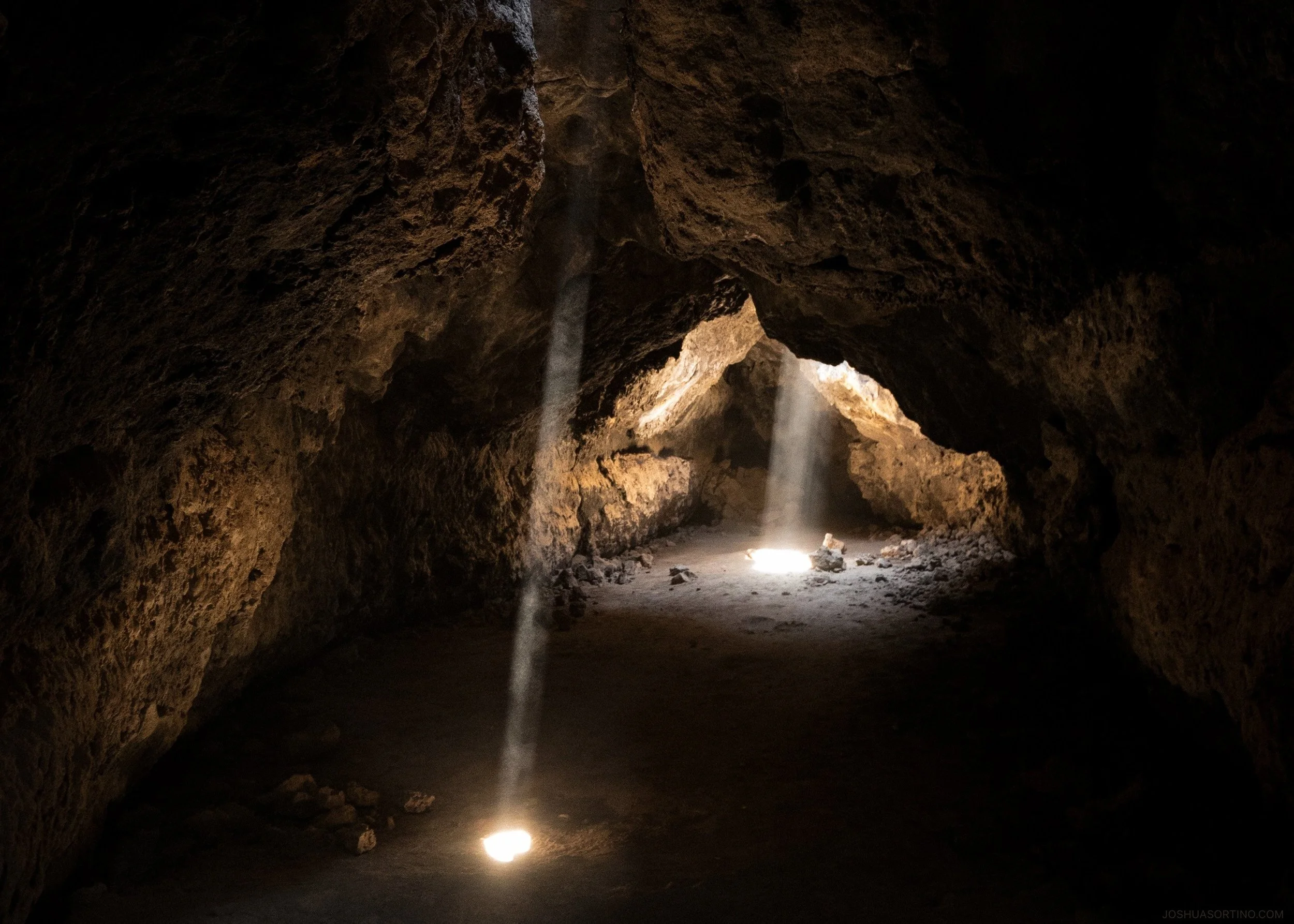Wildflower Walk in East Tennessee | Spring / Summer
/This morning, I awoke in the moody dawn light to a strong rain pounding on our metal roof.
I’d gratefully awaited this rain that wasn’t expected until next week, and new the morning would be especially lovely. I was not disappointed, and it was as if in the few minutes before the rain tapered off and I dressed to run outside that new flowers sprouted in my impromptu ‘garden.’
Garden sits in quotation marks and italics because this plot is not tended, not fed, and certainly not planned. It’s almost like a median, between our driveaway and the greater “road” that makes the driveway to our neighbors home, and it is typically mowed down with a weedwhacker religiously.
When asked if I minded if it were included in last month’s weeding, I was careful to express my rejection… the very thought of mowing down a beautifully formed selection of the environments natural plants would be like wiping out a research lab or an archaeological site. There was too much for me to discover in this small patch.
I have followed the journey of a few special plants who, in the absence of threat, have become a plethora almost instantly. They have grown toweringly tall and have multiplied happily, giving me much to see, learn, and enjoy on a daily basis.
At dawn, I was graced with two new flowers I’d not yet experienced, and a thrush of familiar faces (and scents) I’ve come to enjoy.
I brewed a cup of pu’ehr tea, grabbed my camera (phone) and set out to capture the new arrivals.
Queen Anne’s Lace
Pictured in the post’s title photo.
I did a quick google search of the plant’s characteristics to narrow down a possible match for this plant, as I was completely unfamiliar with its origins. I searched, “small white cluster flower weed east tennessee,” covering the bases of size, color, shape, type, and location, all of which are important when getting to know your local flora. As expected, I was led to the National Wildflower database, which is a wealth of information for the entire United States with regards to botanicals.
I learned not only that this beauty is Queen Anne’s Lace, but also that it is a member of the carrot family!
I only have two stalks growing, so I am not ready to check if there are any types of carrots growing beneath the surface. But, if you look at photos of carrots that have “gone to seed,” in other words, they are flowering at the top, they bear a resemblance to Queen Anne’s Lace.
In the future, when we have our own land and homestead, this flower will certainly be part of my personal garden, regardless of its classification as a weed. Queen Anne’s Lace makes for beautiful cuttings and as lovely addition to a bouquet.
Narrowleaf Vervain
Also known as Simple Verbena
Known as a hardy, resilient plant, Narrowleaf Vervain has fuzzy stalks and beautiful flowers that grow up a tall petiole. I wasn’t able to find much on this plant’s medicinal properties, as it bears little to no relations to the popular Lemon Verbena or the lesser-known but highly medicinal Blue Vervain, but it’s highly beneficial to local butterflies and bees.
Wild Garlic
Still not sure if I’m ready to cook with this…
I had to do a bit of research on this plant, as I wasn’t sure if I was confusing it for a wild onion or if the two were one in the same. In fact, there are three ‘wild’ varities that all have differences, despite being the same family.
Wild Garlic
Pictured here, and has cylindrical, hollow stalky leaves. These grow in clumps of multiple individual plants and form bulblets at the top of their flowering stalks, in addition to a bulb in the ground. If I understand correctly, the bulbs are edible and the bulblets are for proliferation.
Wild Onion
Similar to wild garlic, but with flat leaves, and resembling more of a green onion (than a chive, as wild garlic does). You can also eat this one, but I don’t believe I have any in my yard.
Ramp
Ramp leaves are wide and flat, and they grow a bit like a leek. I am unsure if these grow in East Tennessee, but if I find them, I will certainly try them. They are unlike anything I’ve had before!
I found this pictoral guide very helpful in my quest to better understand these wild foods, and they link a recipe in which wild garlic is a perfect fit!
Oxeye Daisy
Little patches of sunshine all over the land.
Maybe I should have known this, but this daisy (and all others) are of the Chrysanthemum family! Chrysanthemum tea is among my favorites, less for its taste and more for its seemingly immediate medicinal effects. After doing a quick search, I found this article by Rebecca's Herbs about chrysanthemum's healing properties and gleaned a ton of useful information beyond my existing assumptions.
Main benefits include:
Tissue protection and purification
Astringency
Mood boosting
Heat relieving
Yin tonic
Antimicrobial effects
There are so many of these, I may pick two bundles. The first for a bouquet, and the second to hang-dry for tea!
Wild Strawberry
Also known as Virginia Strawberry.
While not as sweet as their domestically cultivated counterparts, wild strawberries have a faint, musky sweetness to them that if nurtured, could rival any grocery store find! The land on which we live has been neglected and abused for many years, so I believe this plays into my berries' particular dullness, though I can sense a bit of sweetness as each heat wave passes over the plants.
These berries have three toothed leaves and white, five-petal flowers just like the common domestic strawberry, but the berries are smaller, softer, and rounder. What I did not know is that strawberries are in the rose family, specifically due of their leaf shape and petal pattern. This must be why strawberry rose jam is a food of the Gods! in my opinion.
I may need to go out foraging for cottage rose or wild rose, steep the petals in simple syrup for some time, and combine with wild strawberries for an experimental jam!
Spear Thistle
Also known as Bull Thistle, and my current muse.
Growing stalks a whopping 5 - 6 feet high (and smaller and windier, at times), the spear thistle throws up a triumphant burst of soft stringy "petals" on its single bloom per stalk. Below the bloom is a treacherous web of pointy stalks that are literally the worst thing ever to tough. Except for maybe an agave plant. Ouch.
Thistles have a long medicinal history in herbal and magical lore, mainly known for their impact on the circulatory system and its dependent entities. I've also read that you can eat the stalks, but I can't fathom. It's hard enough to cut a bloom from the nearly-clean top stalk, let alone attempt to prune the plan for eating.
Here's a top-shot perspective of a bloom ready to burst. By the time it's ready to become a flower, a stalk of 12 - 20 in may shoot out of this mandala of thorns and emerge a bright fuschia puff ball, smelling lavishly of honeyed lilacs.
I hope you have enjoyed this short walk through my wildflower preserve in East Tennessee.
There are many more blooms to be discovered in the lands surrounding my immediate yard, and I do my best to explore as often as possible. If you find yourself curious about the flowers growing in your yard, outside your place of work, or on the side of the road, get to know the US Wildflower Database which you can browse by:
State
Family
Color
Scientific Name
Common Name
Do you have a favorite on this list? Or one of your own yard?
Please share a photo of a wildflower you love in the comments below and let me know where the photos was taken. I'd delight in the opportunity to learn more about wildflowers across the globe!


















